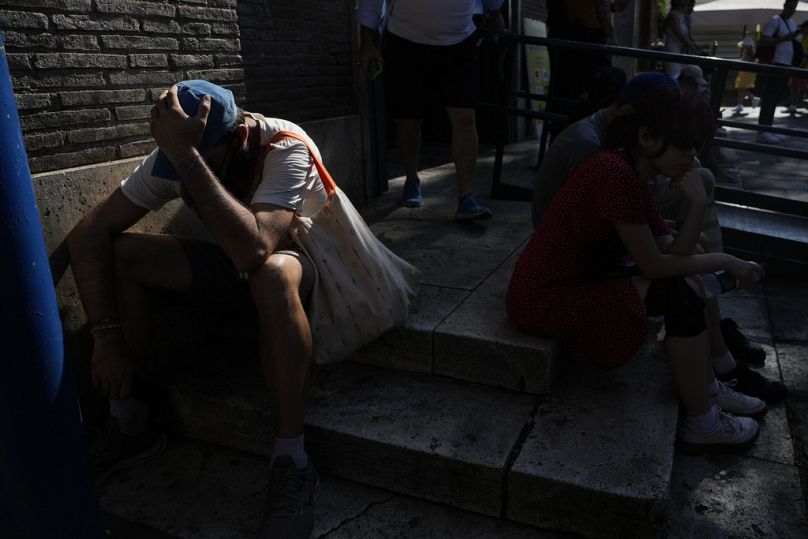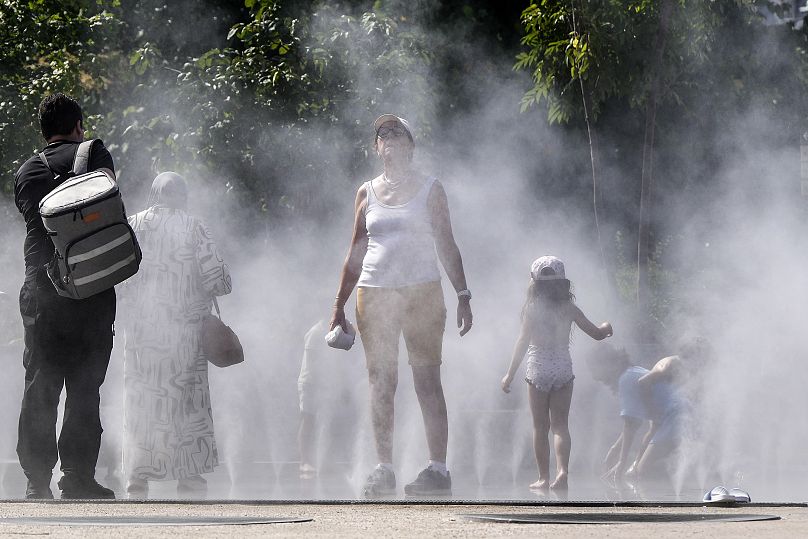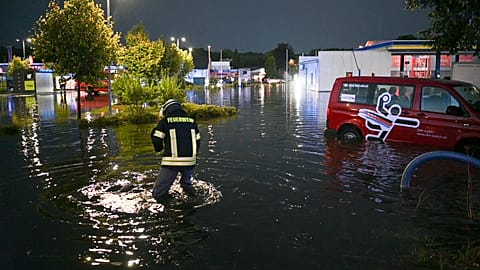High heat combined with humidity is making this weather especially uncomfortable.
Much of Europe has been baking over the last few days as the continent faces the latest in a series of scorching heatwaves. It has left many questioning when the unbearably warm weather will end.
Almost all of France has seen several days of high-temperature alerts with thermometers soaring over 30C across the country. The extreme heat came as the country faced the anniversary of the 2003 disaster that saw 15,000 people die due to the extreme heat on 11 August.
Italy has been engulfed in almost constant heatwaves since the middle of June. Parts of the country have been forecast to see record temperatures over 40C. Authorities placed 40 departments on orange heatwave alert on Monday, with just nine remaining on Tuesday morning.
City hospitals have also reported a 20 per cent rise in people seeking emergency care for heat-related illnesses.
Since Friday, Spain has been battling what is likely its most intense heatwave of the summer. National meteorological organisation Aemets said temperatures could exceed 40C in areas of Andalusia and the northeast. High temperatures and dry weather have also increased the fire risk in many places.
Monday was the hottest day so far this year in the UK with temperatures of 34C recorded in the Cambridge area.
The hot weather comes as experts from the Barcelona Institute for Global Health revealed that blistering heat killed more than 47,000 people in Europe last year.
While this spell of extreme heat is expected to lift for many before the end of the week it might not yet be the end of this year’s high temperatures. Here’s what the experts are predicting.
Why does it feel so hot in central and western Europe?
Lars Lowinski, a meteorologist for Weather & Radar, says that a combination of heat and humidity is making the weather really uncomfortable for many across western Europe.
It seems hotter when humidity is high because of the amount of moisture in the air. Our bodies naturally regulate temperature by sweating. That sweat evaporating into the ambient air cools us down. When there is more moisture in the air, sweat doesn’t evaporate as much meaning we feel hotter.
“This same humid heat is affecting large parts of France, the Benelux countries as well as Germany and other central European countries this week,” he explains.
What is notable, Lowinski adds, is that the warm weather is also affecting the far north of Europe, past the Arctic Circle all the way up to Spitsbergen. Temperatures there reached 20C on Sunday - a record for the month of August.
This spell of extreme heat is expected to lift for many before the end of the week but it might not yet be the end of this year’s high temperatures. Here’s what the experts are predicting.
When will this heatwave end in Europe?
Relief could be in sight for some in Europe over the next few days as the heatwave begins to break. But conditions will persist in eastern and southern parts of the continent.
“So, the peak of the current very hot spell is basically [the 12 and 13 August] in western Europe, with a gradual cool-down expected from Wednesday,” Lowinski says.
“Meanwhile, eastern and especially southeastern parts of Europe will see much warmer than average conditions through this weekend. This comes after a sometimes record-breaking hot July in those areas, especially in the Balkans.”
Why is Europe so hot right now?
“This time, the hot weather has been caused by a ‘plume’ of very warm air from northern Africa and Spain which was pulled northwards ahead of a low-pressure system out in the Atlantic,” Lowinski explains.
“While these incursions of hot air from the south are not unusual during summer, there has been a tendency for these warm air masses to become even hotter due to climate change.”
Sea surface temperatures around Europe have also been high, he adds, particularly in the Mediterranean where they are sometimes 4 to 6C warmer than normal for August.
“Water temperatures in the Med are often between 26 and 30C, which leads to even more heat and humidity there, so even coastal areas will not see much of a relief.”
Will Europe’s hot weather continue for the rest of August?
Though longer-term weather forecasts are sometimes uncertain, Lowinski says we can pull out some general trends rather than precise predictions. And, in general, trends show that warmer-than-normal conditions are likely to continue especially across southern and southeastern Europe.
If the winds turn to a southerly sector again, central and western Europe could also see some further warm or very warm spells.
What can be said though is that the very warm water in the Med and around many western European coasts will remain an issue in the next few weeks since the sea can store a lot of warmth. Water temperatures change much slower than land temperatures.
“This basically means that all the warmth stored in the sea will continue to support warmer and more humid weather unless there is a major change in the weather pattern sometime in the autumn,” Lowinski says.
He warns that these higher sea surface temperatures and more moisture in the atmosphere also mean more fuel for rain and thunderstorms.
“This is something we have seen already this summer in some parts of the continent and more thunderstorms, sometimes with torrential rains and flash floods are likely to affect parts of central Europe in particular in the next couple of days.”




















